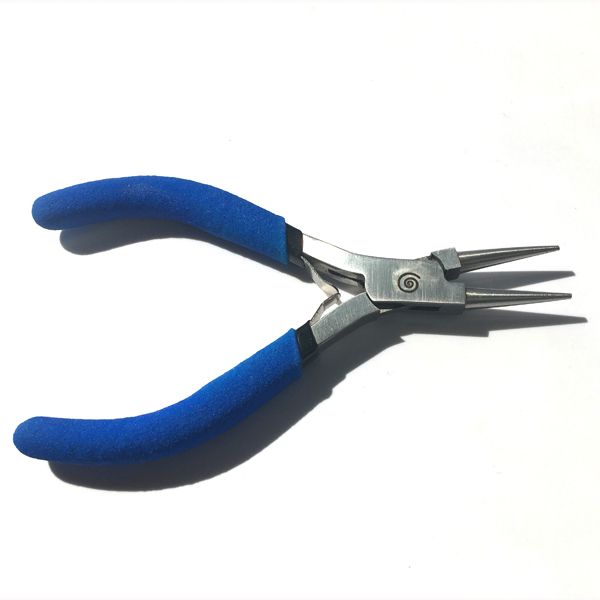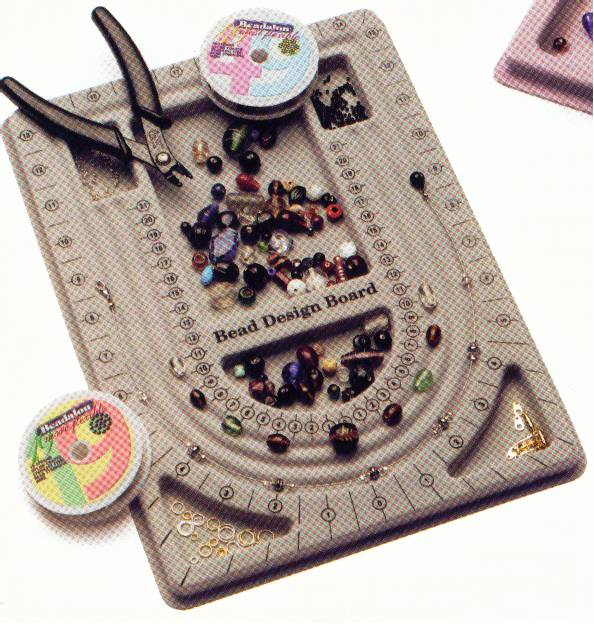Creating beautiful beadwork requires a combination of creativity, skills, and the right tools. Whether you are just starting or are a seasoned beading enthusiast, understanding the essential tools helps enhance your craft. Beading tools are designed to simplify the beading process and ensure precise, professional-looking results. Consequently, this article explores the various beading tools available, how to use them, and their importance in your beading toolkit. Therefore, by the end of this guide, you will have a comprehensive understanding of the tools needed to create stunning beadwork.
Basic Beading Tools
Basic beading tools are essential for any beading project. These tools lay the foundation for more advanced techniques and are often the first items to invest in. Therefore, exploring the essential basic beading tools is crucial for your beading journey.

Needle-Nose Pliers
Needle-nose pliers are one of the most versatile tools in a beader’s toolkit. These pliers have long, tapered jaws that allow for precision when working with small components. They are ideal for opening and closing jump rings, bending wire, and holding tiny beads. The thin jaws of needle-nose pliers provide a firm grip, making them suitable for intricate work. Additionally, they often come with a built-in cutter for trimming wire and beading thread. Therefore, needle-nose pliers are indispensable for executing detailed tasks in beading.
Beading Needles
Beading needles are slender, flexible needles designed to pass easily through small bead holes. They come in various sizes and lengths to accommodate different bead types and thread thicknesses. The flexibility of beading needles allows them to navigate through complex bead patterns and tight spaces. Using the correct needle size ensures that the beads fit snugly without damaging the thread. Additionally, some needles are specifically designed for certain beading techniques, such as loom beading or embroidery. Therefore, having a variety of beading needles in your toolkit is essential for versatile beading projects.
Advanced Beading Tools
As you gain more experience in beading, incorporating advanced tools into your setup can significantly enhance your work. These tools enable more complex designs and streamline the beading process. Therefore, exploring advanced beading tools helps elevate your beadwork.
Crimping Pliers
Crimping pliers are specialized tools used for securing crimp beads and crimp tubes in jewelry making. They have two distinct notches: one for crimping and the other for rounding off the crimped bead. Properly crimped beads ensure that your jewelry pieces are securely fastened and durable. Crimping pliers simplify the process of attaching clasps, jump rings, and other findings to your beaded creations. By using crimping pliers, you can achieve professional-quality results and improve the overall finish of your jewelry. Therefore, crimping pliers are essential for advanced beading projects.

Bead Reamer
A bead reamer is a handy tool used to enlarge or smooth out the holes in beads. It comes with a tapered, abrasive tip that gently grinds away excess material from the bead hole. This tool is particularly useful when working with natural stones or pearls, which may have irregular or rough holes. By using a bead reamer, you can ensure that your beads fit securely on the thread or wire without causing damage. Additionally, bead reamers can help make slight adjustments to bead holes, improving the overall fit and alignment of your designs. Therefore, a bead reamer is a valuable addition to your beading toolkit for achieving precise results.
Specialty Beading Tools
Specialty beading tools cater to specific techniques and projects, allowing for greater creativity and precision. Understanding these specialty tools helps you expand your beading capabilities. Therefore, exploring specialty beading tools enhances your versatility and skillset.
Beading Mat
A beading mat is a soft, non-slip surface designed to keep beads and small components in place while you work. It prevents beads from rolling off the work area, making it easier to organize and handle them. Beading mats come in various sizes and materials, with some featuring grid lines or compartments for sorting beads. Using a beading mat enhances your efficiency and helps maintain a tidy workspace. Additionally, the soft surface protects delicate beads from damage. Therefore, a beading mat is a practical and essential tool for any beading project.

Beading Loom
A beading loom is a specialized tool used to create intricate woven beadwork patterns. It consists of a frame that holds the warp threads in place while you weave the weft threads through the beads. Beading looms allow for precise and consistent patterns, making them ideal for creating bracelets, necklaces, and other decorative items. Using a beading loom requires some practice, but it offers endless possibilities for creative designs. Various types of beading looms are available, ranging from simple hand looms to more advanced, adjustable looms. Therefore, a beading loom is an excellent tool for expanding your beading techniques and creating detailed pieces.
Tips for Using Beading Tools
Using beading tools effectively can significantly improve the quality of your beadwork. Understanding tips and best practices enhances your beading experience and ensures professional results. Therefore, exploring tips for using beading tools is essential for achieving optimal outcomes.
Choosing the Right Tools for Your Project
Selecting the right tools for your beading project is crucial for achieving the desired results. Consider the materials, bead types, and techniques involved in your project when choosing your tools. For example, needle-nose pliers are ideal for wirework, while beading needles are essential for thread-based projects. Having the appropriate tools on hand streamlines the beading process and ensures precision in your work. Additionally, investing in high-quality tools can make a significant difference in the ease and accuracy of your beadwork. Therefore, choosing the right tools for your project is key to successful beading.

Maintaining Your Beading Tools
Proper maintenance of your beading tools ensures their longevity and performance. Regularly clean and inspect your tools to remove any residue, dirt, or debris that may accumulate during use. Use a soft cloth to wipe down pliers, needles, and other metal tools, and store them in a dry, organized space to prevent rust and damage. Sharpen or replace dull beading needles and broken tools as needed to maintain the precision of your work. By taking care of your beading tools, you can ensure they remain in excellent condition and continue to deliver reliable results. Therefore, maintaining your beading tools is essential for long-term success.
Common Mistakes to Avoid
Avoiding common mistakes when using beading tools can help you achieve better results and prevent frustration. Understanding these mistakes and how to avoid them enhances your beading experience. Therefore, exploring common mistakes to avoid ensures more effective and enjoyable beading.
Using the Wrong Tool for the Job
One common mistake is using the wrong tool for the job, which can lead to imprecise results and potential damage to your beads and tools. For example, using regular pliers instead of crimping pliers to secure crimp beads can result in weak or uneven crimps. Similarly, using a sewing needle instead of a beading needle can cause difficulty threading beads and may damage the thread. Always use the appropriate tool for each task to ensure accuracy and professionalism in your beadwork. Therefore, avoiding the use of incorrect tools is crucial for achieving high-quality results.

Neglecting Tool Maintenance
Another common mistake is neglecting the maintenance of your beading tools. Over time, tools can become dirty, dull, or damaged, affecting their performance and the quality of your work. Regularly cleaning and maintaining your tools helps prevent issues and ensures they function correctly. Failing to sharpen a dull needle or replace a broken tool can lead to frustration and subpar results. Make tool maintenance a regular part of your beading routine to keep your tools in optimal condition. Therefore, consistent tool maintenance is essential for effective and enjoyable beading.
Conclusion: Enhancing Your Beading Experience
Having the right beading tools and understanding how to use them effectively is essential for achieving professional-quality beadwork. From basic tools like needle-nose pliers and beading needles to advanced tools like crimping pliers and bead reamers, each tool plays a crucial role in your beading projects.
Investing in specialty tools, such as beading mats and looms, allows you to expand your techniques and create more intricate designs. Implementing tips for using and maintaining your tools enhances your overall beading experience and ensures longevity and performance.
Avoiding common mistakes, such as using the wrong tool for the job and neglecting tool maintenance, further contributes to the quality of your beadwork. By taking the time to understand and implement these strategies, you can elevate your beading projects and enjoy the process more fully.
Therefore, embrace these insights and equip yourself with the right tools to create stunning and professional beadwork. Happy beading!
